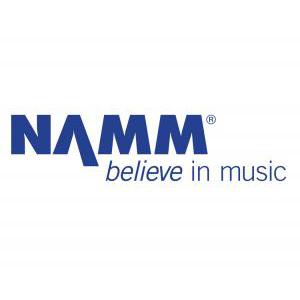
Study First to Detail the Costs of Comprehensive Music Education
NAMM Foundation-funded research shows cost averages $187 per student annually for K-12 music education programs

A first-of-its-kind study outlines the actual costs of a comprehensive k-12 music education program. The research funded by the National Association of Music Merchants (NAMM) Foundation’s Sounds of Learning research initiative, calculates a cost for music education averaging $187 per student annually in the sample school district.
Mark L. Fermanich of the Center for Education Policy Analysis in the School of Public Affairs, now part of the Buechner Institute for Governance in the School of Public Affairs, at the University of Colorado Denver conducted the in-depth case study of spending for music programs in a large school district. The study, first published in Journal of Education Finance, is the first to examine financial resources for music education beyond staffing levels. Research such as this can inform budget and policy debates over support for music and the arts, while districts weigh the costs and benefits of cutting funding.
To investigate this issue further, Fermanich’s study focused on a school district, which served over 70,000 students during the 2009-2010 school year. The district includes urban, suburban and rural schools with a total district budget of $853 million. From that $13.9 million was allocated to music education representing 1.6% percent of total district expenditures. The sample school district is moderately diverse with 25% minority students and 25% of the student population designated eligible for Title 1 funds available for low-income families. Participation in elective music programs in the district’s middle and high school levels mirror the district’s demographics, with minorities equally as likely as whites to participate.
“This study sheds light on the true costs of a comprehensive music education,” said Fermanich, a Research Associate at the University of Colorado Denver. “It also asks school districts to carefully assess the effects of ‘cutting’ music education programs as they seek to reduce expenditures or re-allocate funds away from the arts to tested subjects that are measured for accountability purposes.”
Based on total enrollment, the study reveals that the music education costs average $187 per student annually. Costs averaged $195 per student at the elementary level (grades 1-5) where general music, a 45-minute music class per three-day cycle, is mandatory. Per student spending in middle school averaged $189 and $143 in high school, as music instruction is elective at the secondary level.
The school district examined in this study is committed to a robust music program with general music and instrumental music offerings for all grades. The principals and teachers surveyed in the study placed a high value on music’s benefits to their students and their schools. In addition to universal elementary music participation, the study found that over 50 percent of students in middle school and high school participate in elective band, choir and orchestra offerings. The study also found that these core education funds gave these schools better access to quality music instruction. Additionally, participation in school music programs correlated to lowered drop out rates and higher school engagement.1
“School districts are facing tough choices as state and local education funding is strained. NAMM encourages school districts to consider the many benefits of music education in comparison to the relatively low cost within the overall budget as revealed by this study,” said Joe Lamond, president and CEO of NAMM. “We cannot sell a child’s education short for what are pennies on the dollar. Music education is among the best investments we can make in our schools and for our children.”
The combined forces of national high stakes accountability with the passage of the federal No Child Left Behind (NCLB) law (20 U.S.C. §6301, 2001) and the ongoing budget crisis have led school districts to reduce funding for subjects that are not assessed for state accountability purposes. But research suggests involvement in music programs may keep kids in school and boost success in other academic subjects, particularly in math (Deasy 2002; Fiske 1999; Helmrich 2010). The public also supports arts education with 93% of Americans responding that the arts are essential for providing students with a well-rounded education.2
“This study represents only a first step,” said Fermanich. “Much more can be learned through more complete research into financing and resource uses of music and other arts programs.”
[1] Results from the Fall 2011 Journal of Education Finance study.
2 2005 Harris Poll commissioned by Americans for the Arts
Media Contacts
NAMM Communications - John Dolak, Director
johnd@namm.org
619.735.4028
The Lippin Group for NAMM
namm@lippingroup.com
201.317.6618
About NAMM
The National Association of Music Merchants (NAMM) is the not-for-profit association with a mission to strengthen the $19.5 billion music products industry. NAMM is comprised of 15,400 global member companies and individual professionals with a global workforce of over 475,000 employees. NAMM events and members fund The NAMM Foundation's efforts to promote the pleasures and benefits of music and advance active participation in music-making across the lifespan. For more information about NAMM, please visit www.namm.org.